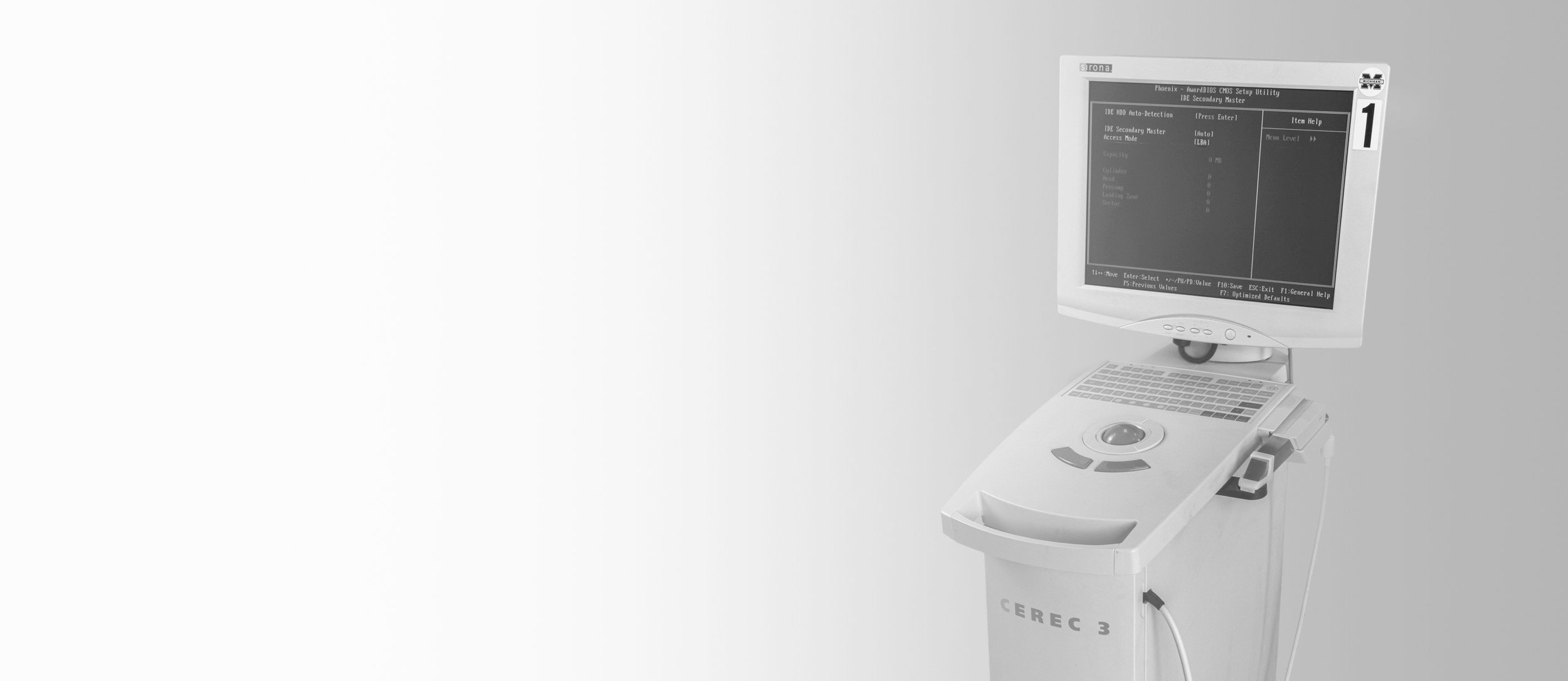
HOME > ALL DISPLAYS > 1970-2000 > CEREC 3

CEREC 3
1983-1995
In the mid-1980s, Prof. Dr. Werner H. Mörmann and electrical engineer Dr. Marco Brandestini designed an intraoral scanner for taking optical impressions, a milling unit for the computer aided fabrication of restorations, and a software, known as CEREC (CEramic REConstruction). The invention marked the beginning of digitalization in dentistry.
“The task of designing a technical process, from data acquisition to the finished restoration in a dental application fascinated us. We saw a new restorative world develop in front of our mental eyes.” - Werner H. Mörmann
Computer aided design (CAD) and computer aided manufacturing (CAM) has been part of the U-M School of Dentistry’s curriculum since the 1990s. The programs developed through the leadership of Dr. Dennis Fasbinder (pictured here with a CEREC 6).
